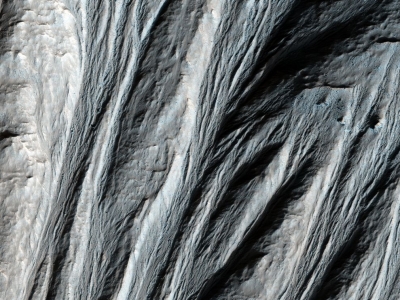
On photographs gullies look like little wrinkles on the surface of Mars. But they are actually channels that run for hundreds of metres!
Called gullies, because of their similarity with the gullies seen on the Earth, they are found on both the northern and southern hemispheres of Mars, but are more common on the southern side. They are seen on steep slopes, like those inside craters, mostly on the sides that face the nearest pole. Looking at the near absence of craters in gullies, scientists say they may be very young formations!
Gullies usually have an hourglass shape – starting with “alcoves” (branched, root-like formations made up of smaller grooves) at the top of the slope that merge into a single channel, and ending in a fan-shaped deposit of debris called “apron” at the bottom. Smaller forms of gullies, called linear dune gullies, are found on the slopes of Martian sand dunes.
Though the grooves they cut are long, their alcoves are very small, and they may not even have aprons. Instead, they have raised banks known as levees on either side of their channels.
Picture Credit : Google




